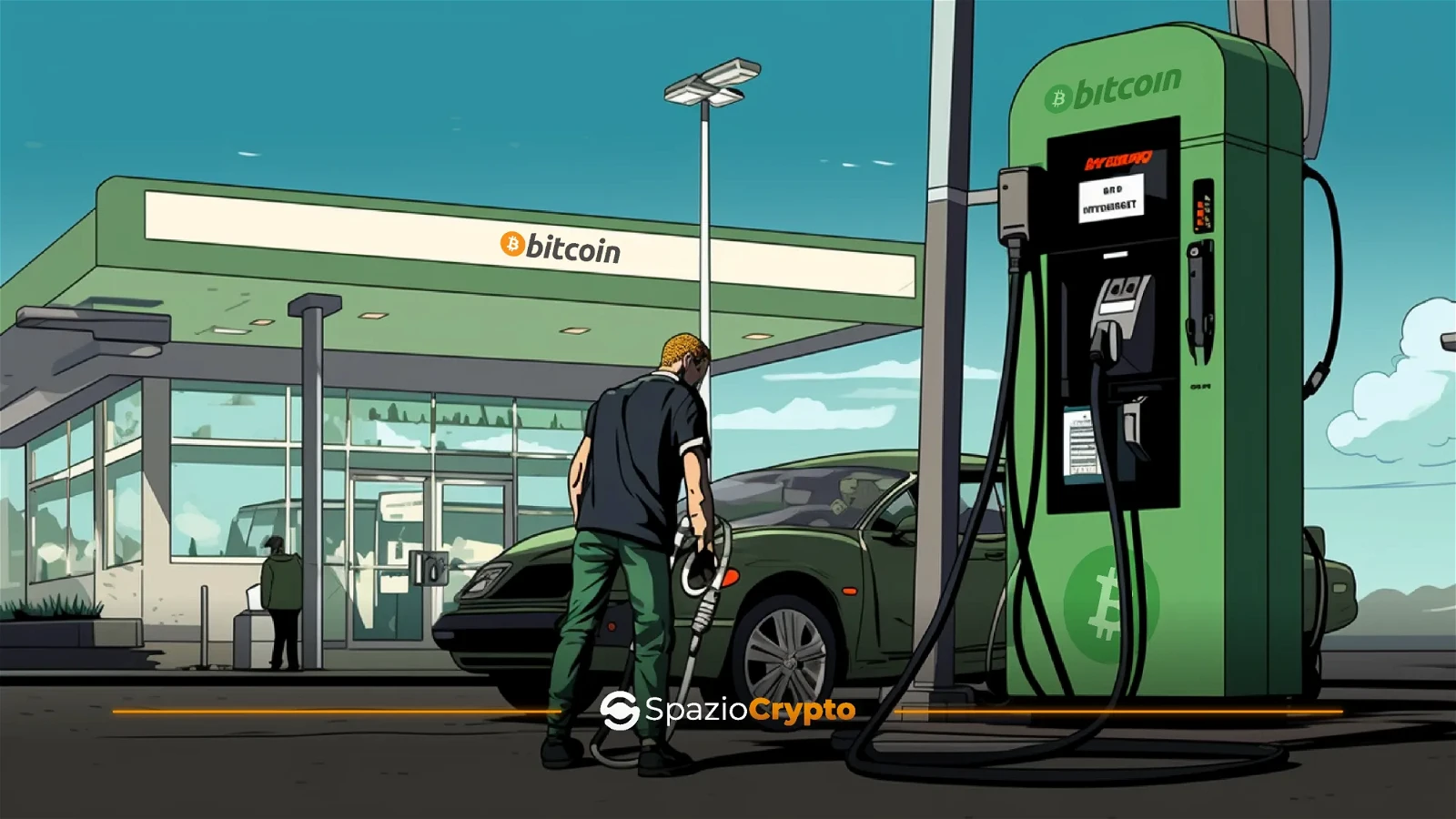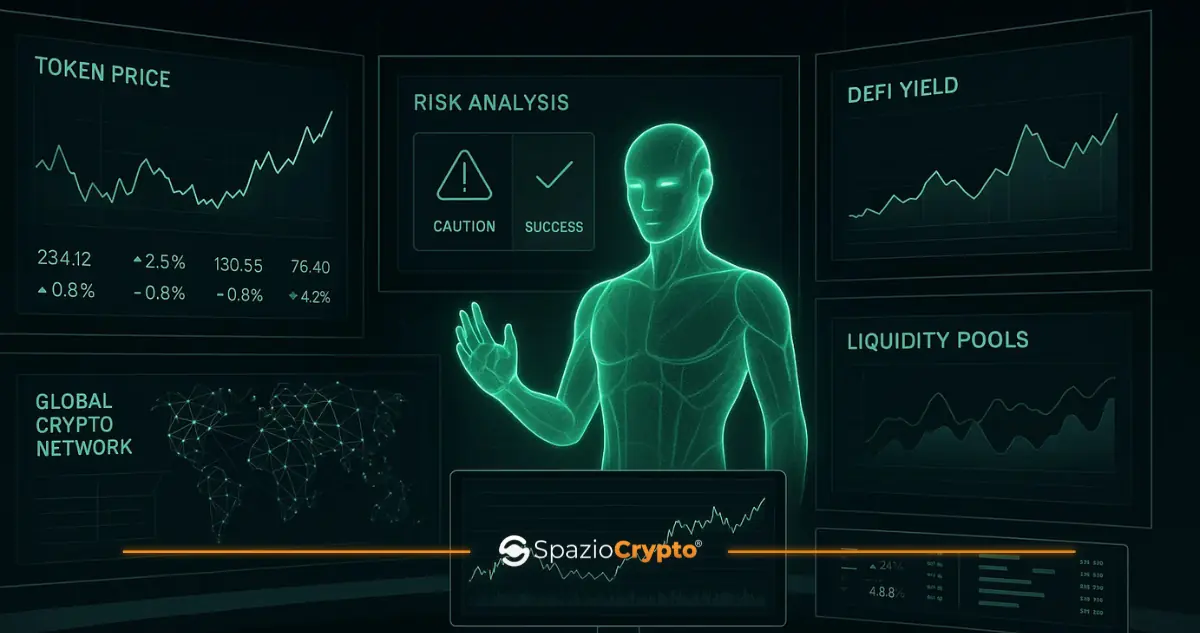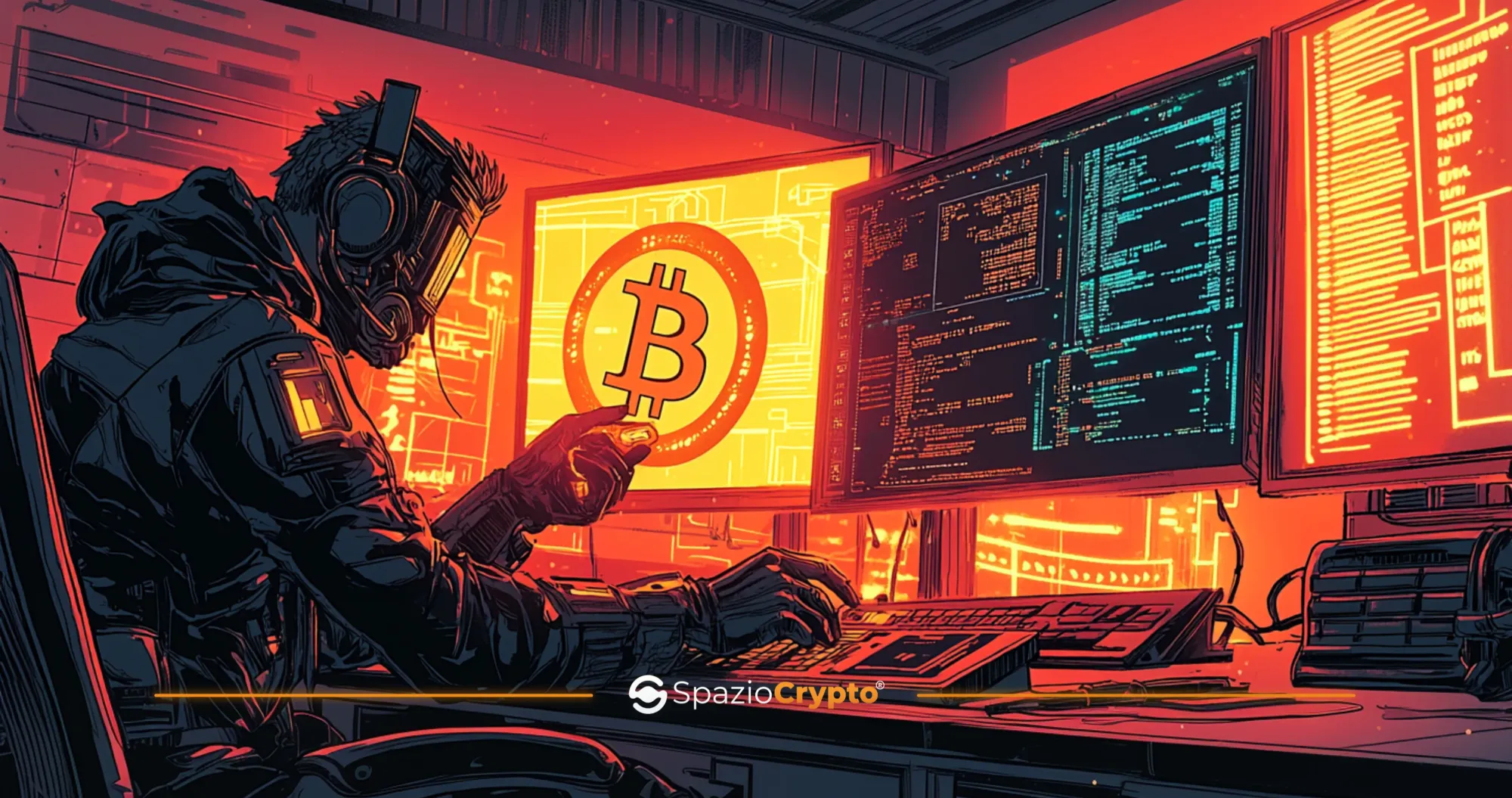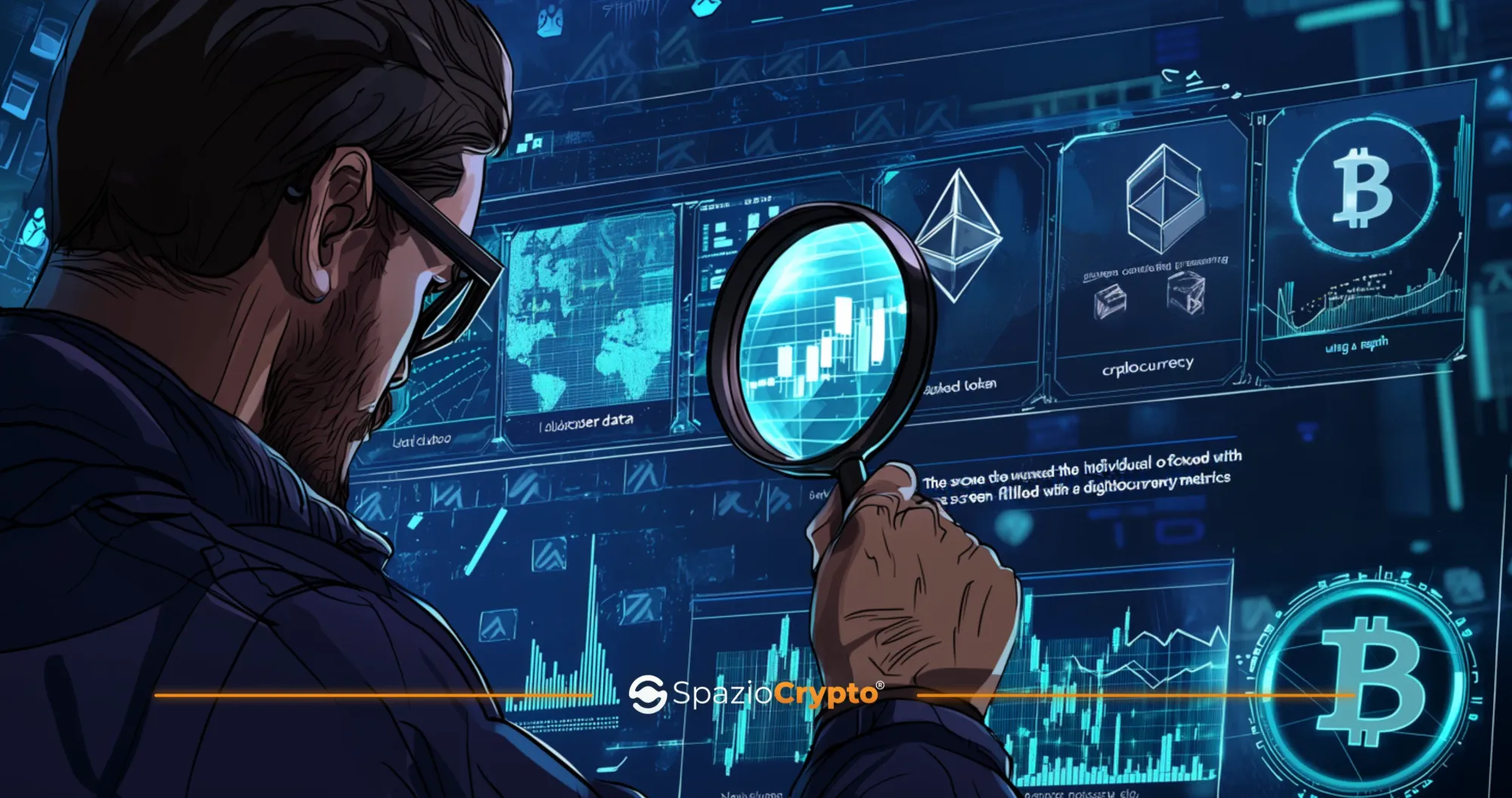The term 'gas fees' refers to the amount of computational resources required to perform a transaction on a blockchain. Gas fees are the costs associated with these transactions, and their importance is evident in ensuring the security and efficiency of the blockchain network. Fees can vary considerably depending on network load and other factors, and understanding how they work and how they affect transactions is essential for anyone who wants to actively participate in the cryptocurrency ecosystem.
In this Spaziocrypto's Web3 guide, we will explore the concept of gas fees in detail, analysing its fundamental role in cryptocurrency transactions, the factors that influence gas fees, and strategies for optimising them. We will also look at the current challenges and future prospects related to transaction costs, providing a comprehensive overview of a crucial aspect of the cryptocurrency ecosystem.
What is Gas in Cryptocurrencies?
In the cryptocurrency landscape, the concept of "gas" represents a fundamental resource for the operation of blockchain networks. In essence, gas is a measure of the computational energy required to perform operations within a blockchain. Each transaction, be it a cryptocurrency transaction or the execution of a smart contract, requires a specific amount of gas to be successfully completed.
- Role of Gas in Blockchain Transactions: Gas performs several crucial functions within blockchain transactions. First, it serves as an incentive for the miners that validate and record transactions on the blockchain. In addition, the gas serves as a prevention mechanism for overuse of network resources, ensuring that only truly necessary transactions are executed.
- Gas Structure:The gas is structured to reflect the complexity of the transactions executed on the blockchain. More complex operations require more gas, while simpler operations require less. This model incentivises users to write efficient code and use the network responsibly.
- Gas and Scalability: The issue of scalability is fundamental in the context of blockchain. Gas fees directly influence the scalability of blockchain networks, as they determine how expensive it is to perform transactions on them. High network congestion can lead to increased transaction costs and slow down the entire network. This is a known element of the blockchain dilemma.
- Differences between Gas and Traditional Fees: It is important to distinguish between the gas used in blockchain transactions and the traditional transaction costs of conventional financial services. While the latter are often fixed or based on monetary amounts, gas fees vary depending on the transactions performed and network conditions.
Importance of Gas Fees in the Blockchain
Gas fees are a crucial element in determining the efficiency and reliability of transactions within blockchain networks. Now, we will explore the importance of these fees and how they affect the user experience and stability of blockchain networks.
- Priority of Transactions: Gas Fees determine the priority of transactions on the blockchain. Transactions that offer higher gas fees are more likely to be included in a blockchain in a timely manner by miners. Consequently, users who are willing to pay higher transaction fees can ensure faster confirmation of their transactions.
- Speed of Transactions: Gas fees directly influence the speed at which transactions are processed on the blockchain. Transactions with higher gas fees are usually prioritised and are processed faster than those with lower gas fees. This is particularly important in situations of network congestion, where transactions with lower gas fees could be significantly delayed.
- Transaction Reliability: Another important consideration is the reliability of transactions, which is closely linked to gas fees. Transactions with too low gas fees may not be included in a block for a long time or may even be discarded by miners. This can lead to confirmation problems and the need to repeat transactions, resulting in additional costs and delays.
- User Experience: Gas fees directly affect the user experience when using cryptocurrencies and blockchain networks. Users want fast and reliable transactions, but also reasonable gas fees. Finding a balance between competitive gas fees and acceptable confirmation times is critical to ensuring a positive user experience.
- Scalability of Blockchain Networks:Finally, gas fees play a key role in the scalability of nodes of blockchain networks. Frequent congestion and high gas fees can limit the ability of blockchain networks to handle a high volume of transactions efficiently. Improving gas optimisation is crucial to ensure that blockchain networks can grow and handle the growing interest and usage of cryptocurrencies.
Factors Influencing Gas Fees
Gas fees in blockchain networks are not fixed, but vary based on several factors that influence the supply and demand for computational resources on the network. In this chapter, we will explore the main drivers of gas fees and how they can change in response to market dynamics and network conditions.
- Demand and Supply of Gas: As in any market, gas fees are influenced by the law of supply and demand. When the demand for transactions on the blockchain network is high and the supply of computational resources is limited, gas fees tend to increase. Conversely, during periods of low demand or high network capacity, transaction costs may decrease.
- Network Congestion:Network congestion is one of the main factors affecting gas fees. When the network is congested, i.e. when there are many transactions waiting to be confirmed, miners have the opportunity to select transactions that offer higher gas fees. As a result, gas fees tend to increase during periods of network congestion.
- Cryptocurrency Price Variations: Gas fees are often in cryptocurrencies such as Ethereum (ETH) or other blockchain-native currencies. Therefore, changes in cryptocurrency prices can directly influence the cost of gas fees. If the price of a cryptocurrency increases, the gas fees in that cryptocurrency will become more expensive in fiat currency terms.
- Miners' Policies:Miners have the power to select transactions to be included in blocks based on the gas fees offered by users. Miners' policies, such as preference for higher gas fees or random selection of transactions, can influence the dynamics of gas fees on the network.
- Protocol Updates: Blockchain protocol updates can also influence gas fees. Changes in the gas structure or the transaction selection algorithm can have a significant impact on gas fees and network dynamics.
Criticalities and Challenges
Despite the fundamental role they play, gas fees in cryptocurrency transactions present several criticalities and challenges that need to be addressed to ensure efficient and accessible operation of blockchain networks. In this chapter, we will examine the main critical issues and challenges related to high gas fees and the implications these may have on user experience and cryptocurrency adoption.
- Network Congestion and Increased Gas Fees:One of the most obvious challenges is network congestion, which leads to increased gas fees. During periods of high activity or peak usage of the blockchain, gas fees can increase significantly, making transactions more expensive and less accessible to users.
- Exclusion of Low Priority Transactions:Because of gas fee-based selection by miners, transactions with too low gas fees can be excluded from blocks, especially during periods of network congestion. This can lead to significant delays in transaction confirmations and user dissatisfaction.
- Impact on Decentralised Applications (DApps): High gas fees can limit the accessibility and effectiveness of Decentralised Applications (DApps), which often require many transactions to be executed on the blockchain. This can slow down the development and adoption of DApps and limit opportunities for developers and users.
- Prohibitive Costs for Microtransactions:Gas fees can be particularly onerous for microtransactions, i.e. transactions of small amounts. Since gas fees are often fixed or proportional to the transaction amount, performing microtransactions can become economically unviable for users.
- Equity and Accessibility: High gas fees can raise concerns about the fairness and accessibility of blockchain networks. If gas fees become too expensive, they could exclude low-income users or those who cannot afford to pay high transaction fees.
Tackling these challenges requires a holistic approach involving both blockchain developers and the user community.
Strategies to Optimise Gas Fees
Tackling high gas fees and optimising the efficiency of cryptocurrency transactions requires the adoption of strategies and practices that enable users to more effectively manage the costs associated with transactions. In this concluding chapter, we will explore some of the most common strategies to optimise gas fees and improve the user experience in cryptocurrency transactions.
- Monitoring Gas Fees: One of the key steps to optimising gas fees is to closely monitor the market dynamics and conditions of the blockchain network. There are a number of tools and services available that allow users to track gas fees in real time and make informed decisions on the best time to execute their transactions.
- Choosing the Right Time: Because gas fees can vary greatly based on network conditions, it is important to choose the right time to execute your transactions. Try to avoid periods of network congestion, when gas fees are highest, and prefer to execute transactions when demand is lowest and gas fees are most convenient.
- Setting Gas Fees: Some blockchains allow users to manually set gas fees for their transactions. In situations where gas fees are high, you can set gas fees slightly higher than average to increase the likelihood that your transactions will be quickly included in the blocks.
- Using Layer 2 Protocols: Layer 2 protocols offer scalable and cheaper solutions for executing transactions on the blockchain. Using layer 2 protocols can allow users to execute transactions faster and at a lower cost than transactions on the main blockchain.
- Optimising Smart Contracts: If you are using smart contracts in your transactions, try to optimise them to reduce gas consumption. Writing efficient code and avoiding complex transactions can help reduce transaction costs and make decentralised applications more accessible.
- Participation in Blockchain Governance:Some blockchains allow users to actively participate in the governance of the network, including the choice of gas fees. Participating in blockchain governance can allow users to directly influence network policies and gas fees.
In conclusion, implementing these strategies can help users optimise gas fees and improve the efficiency of their cryptocurrency transactions. However, it is important to remember that gas fees are influenced by a number of external factors and that optimisation may require a certain amount of flexibility and adaptability from users.








